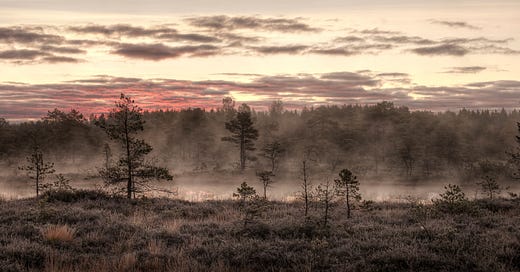Wetlands are one of nature’s most productive—and maligned—ecosystems.
They are comparable to rainforests in the amount of diversity and life they can support, and their complex systems are excellent at providing food and shelter to all kinds of creatures, from fish and amphibians to small mammals and insects. Wetlands can reduce erosion and contribute to climate cooling by acting as a carbon sink, storing the carbon offshoots of their ecosystems rather than releasing it into the atmosphere as carbon dioxide.
By definition, a wetland is a low-lying area of land that is saturated with water, either permanently or occasionally, which is fed by runoff, streams, oceans, or precipitation. It’s a transitional area, a beautiful balance of water and rot, the two epitomes of life. They are a decomposer landscape, absorbing the unwanted: floodwaters, excess nutrients, sediment, and pollutants. They are nature’s livers.
The dark soil, the sulfuric smell, the abundance of slimy creatures and insects—all these combine to make wetlands an area uninterested and unsuited for human convenience. A place of pestilence to be purged, paved over, made palatable.
It’s pretty well established that I love soil and the cycle of decay, so of course I would love a wetland. I’m a muddy little bog baby. But wetlands aren’t just dark, smelly places where humans become pill bugs. They may be mother nature’s liver, but they’re also her womb. They’re sunny expanses, forest oases, avian playgrounds. There’s a wetland for everything your soul could want: marshes, estuaries, mangroves, mudflats, mires, ponds, fens, swamps, deltas, coral reefs, billabongs, lagoons, shallow seas, bogs, lakes, and floodplains.
So, what wetland are you?
Grab a pencil and tally your answers. We’re doing this Cosmo style.
Are you sensitive?
a. Yes, I cry all the time.
b. Not really. I let things roll off me.
c. Yes, but only because the world is very much with me.
d. No, but I’ve had to develop a thick skin.
e. I don’t think so, but sometimes things build up.Are you shallow?
a. I can be extremely deep, and people often tell me I contain multitudes.b. People think I’m shallow, but I actually have hidden depths.
c. Yup. What you see is what you get.
d. Sometimes. Mostly when I’m hot.
e. Being shallow doesn’t mean you don’t have the capacity for deeper reservoirs.Do you smell?
a. I can fucking stink, man.
b. Yes, but in an earthy, man in a romance-novel way.
c. No. I’m spring fresh.
d. Yeah, you don’t want to be around me in summer.
e. I mean…everyone smells sometimes.How reliable are you?
a. Pretty reliable.
b. I have been known to be fickle.
c. I am very likely to disappear for months at a time.
d. I’m a ride or die. I’m not changing unless you kill me.
e. I’m generally pretty reliable, but when life gets hard your expectations of me need to change.What kind of vibes do you bring to the function?
a. I think I’m generally pretty open and bright.
b. I bought a timeshare at the local body farm.
c. I get intense seasonal depression.
d. I love gothic shit but I also want to wear hot pink.
e. I am a bit shy, but I believe that everything can become an opportunity.Let’s talk about friendships. Do you consider yourself a welcoming or nurturing person?
a. Yes! I have many friends in many different friend groups.
b. I have been known to be difficult.
c. Honestly, the party don't start till I show up.
d. I have my ride-or-dies and our friendship is everything to me. To outsiders, I can be off-putting though.
e. Absolutely. I am the mom friend.
Pick a plant.
a. cat tails
b. pitcher plants
c. irises
d. cyprus trees
e. sedges
Are your answers tallied? Good. If you have a tie, then you get to pick between the two. Now, scroll down to see your results.
If you answered mostly A, you are a marsh!
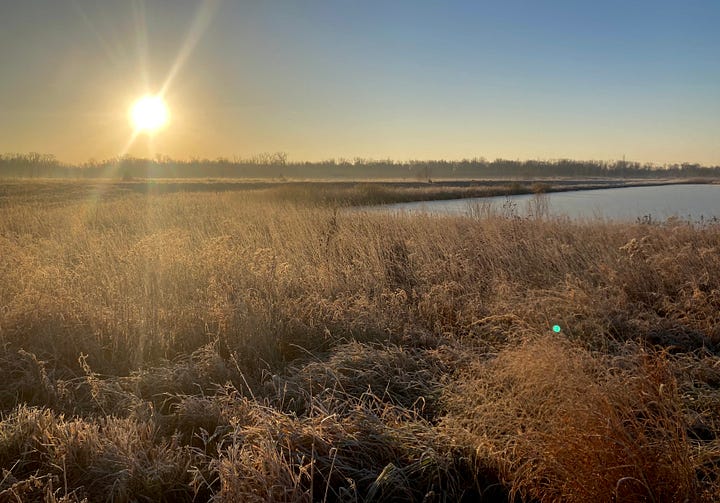
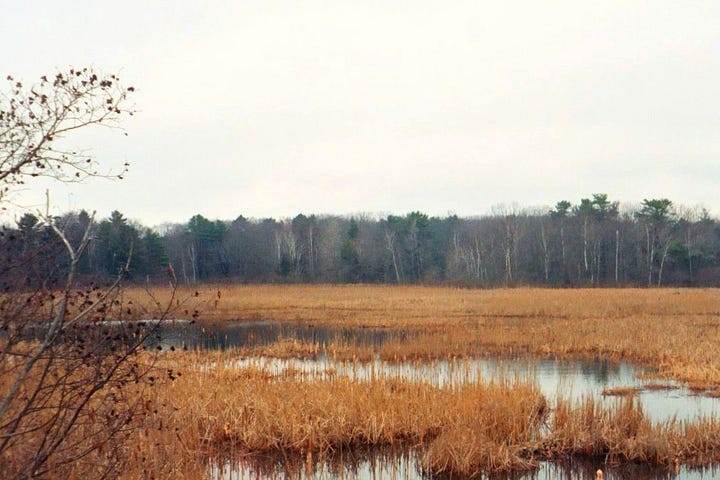


Of all the major wetland types, marshes have the most diversity in presentation and ecosystem. Marshes can be freshwater or tidal, depending on their source. Tidal marshes are marked by that classic “beach farts” or rotten egg smell. They can be shallow for much of the year, or have permanent deep water up to six feet. Marshes are often sunny and open, because few trees are adapted to thrive in their conditions. Migrating birds love a marsh, and so they are a great place to bird watch, as well as frog hunt or even fish. Plants that love a marsh include cattails, bulrushes, lotus, sedges, and water lilies.
If you answered mostly B, you are a bog!
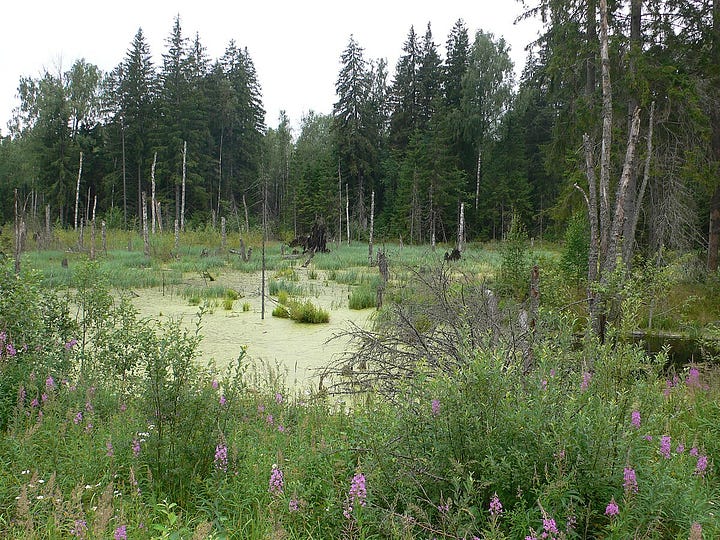


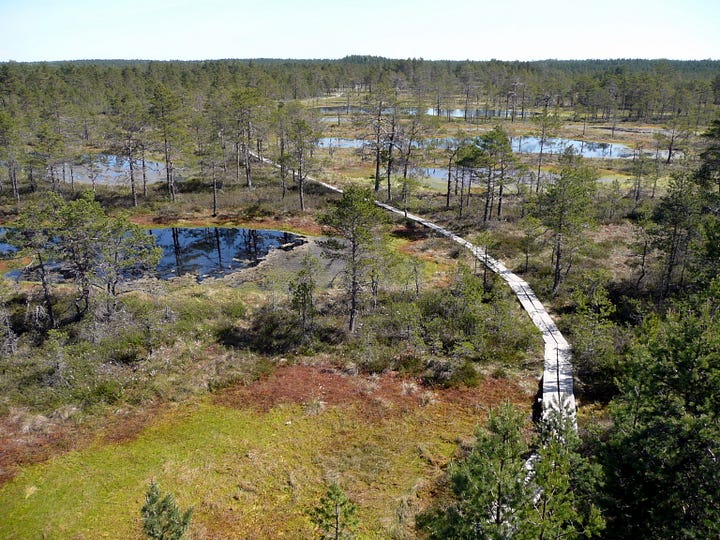
Bogs are the most inhospitable of all the wetlands, and yet play a crucial role as a decomposer and carbon sink. A bog only receives its water from precipitation, and is marked by a spongy, moss-covered surface hiding deeper peat reservoirs. The soil and water is highly acidic, which means that only certain types of plants will thrive in these conditions—but the ones that do, love it. Many berries, such as cranberries or blueberries, thrive in a bog, as well as carnivorous plants like pitcher plants that have turned to insects for their nutrient source. The thick peat layer that makes up the foundation of a bog makes it perfect for slowly decomposing materials over time, like plant matter, or bodies. Nothing happens fast in a bog, and that’s the way they like it.
If you answered mostly C, you are a vernal pool!
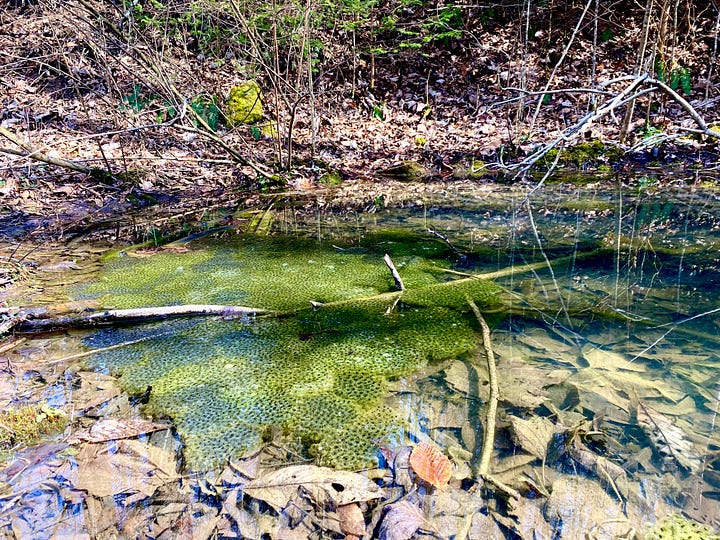

The most fickle of all the wetlands, the mighty vernal pool! Vernal pools are a seasonal environment, meaning they only appear in certain seasons (spring) and act as a temporary habitat for huge amounts of wildlife. They are isolated depressions that are largely filled in by rain and snow melt, and can occur in a variety of places, from woods to fields. If you are looking for frogs and salamanders, the vernal pool should be your first stop. They can appear anywhere, but mostly in meadows or forests along floodplain areas.
If you answered mostly D, you are a swamp!
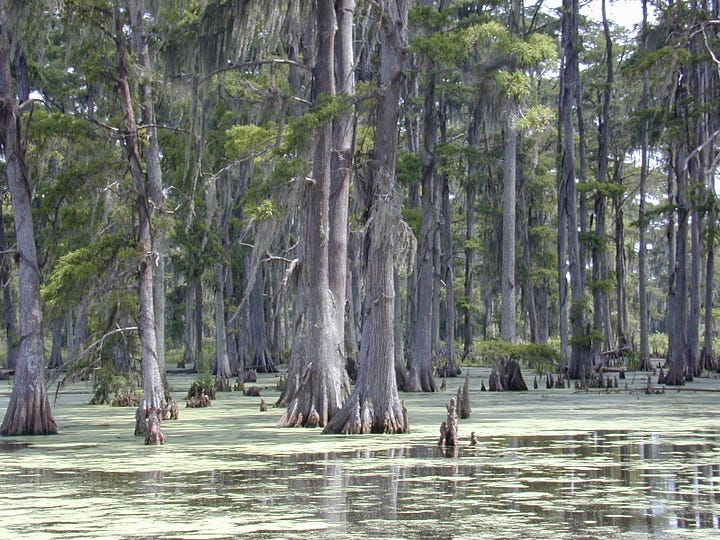

Don’t pretend that you weren’t hoping you’d get swamp, you little ogre. Swamps can come in many shapes and sizes, but the key factor is that swamps are populated by trees or shrubs, which result in them being very shaded, private areas. Swamps get a bad rep, but they’re hugely nutrient dense and often host extremely varied ecosystems. Ducks, otters, snakes, shrimps, crayfish, and more all call swamps home. And one day, if you’re lucky, you will too.
If you answered mostly E, you are a fen!
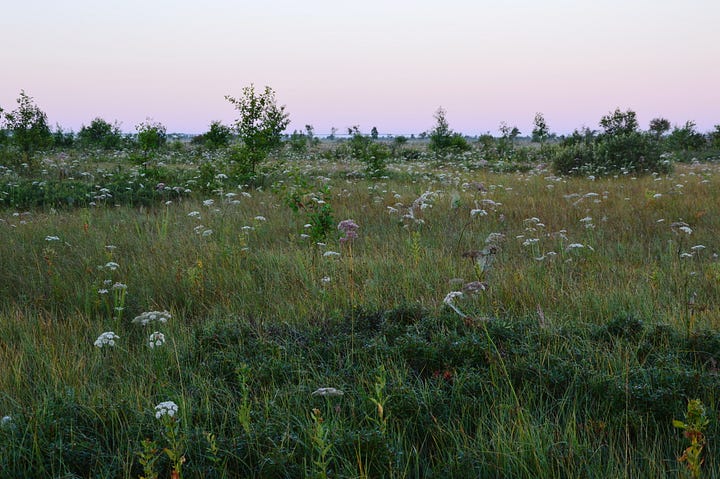
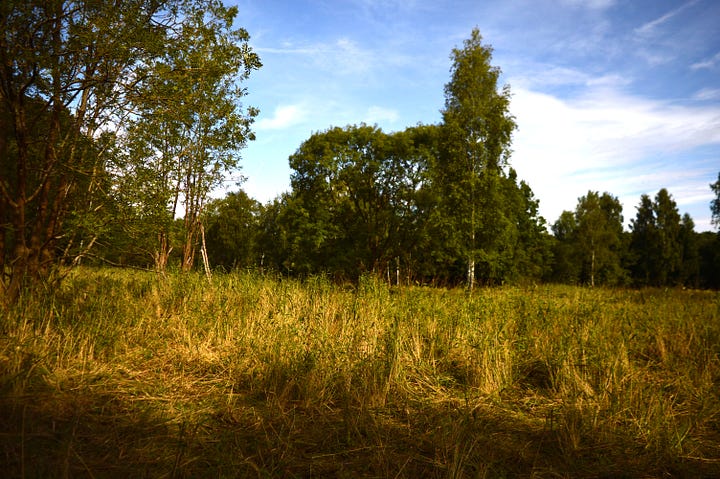
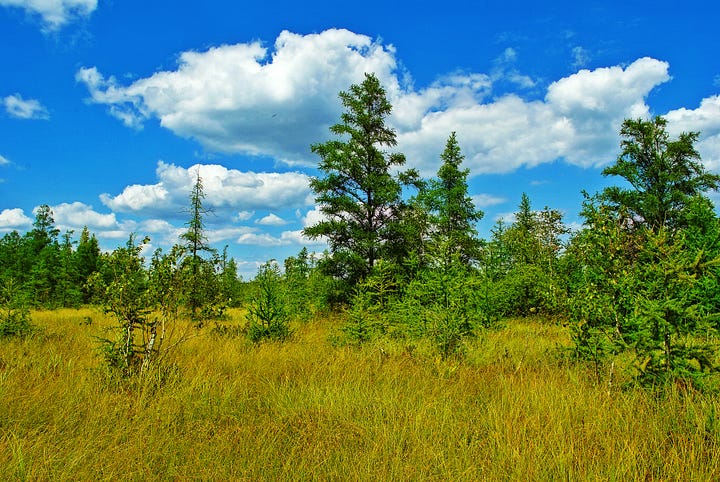
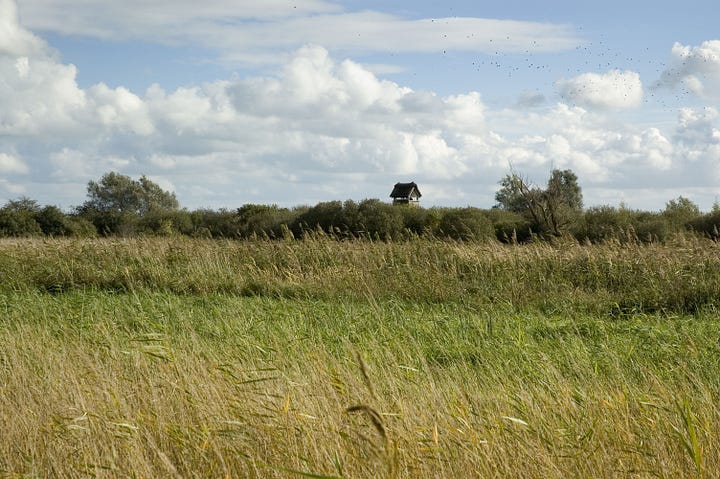
What is a fen, you ask? Well, it’s not a meadow, and it’s not yet a bog. Fens get their water from runoff and groundwater, which brings with it loads of nutrients and sediments. This makes them extremely rich and able to support a lot of life, especially sedges and grasses, which provide habitats for small mammals and insects. The unique chemistry of a fen’s soil also attracts rare species of plants such as orchids. However, fens are ecologically sensitive and are often on the brink. Like a bog, fens have a dense peat layer as part of their foundation—but when things build up, a fen can grow more acidic and transition into a bog.
Each of these wetlands has many different types, which are worth investigation. Try googling “swamp near me” or “marsh near me” and see just how many different types of environments come up. Odds are good that you’ve been living near a wetland most of your life, and didn’t even know it.
However, the other fact is that wetlands are under constant threat worldwide. Despite their rich habitats, they are frequently destroyed, filled in, or stripped of their resources. Huge amounts of wetlands have been drained for human development. While laws do exist to ensure some level of equilibrium, these cannot make up for the lost benefit to species diversity, carbon sink, and flood prevention that wetlands provide. They are as ecologically rich and beneficial as rainforests, and yet they are maligned. Everyone wants to eat at the rainforest cafe, but why not the swamp cafe? All the kids want to go rot in the bog, but maybe this summer you should go take a kayak out on the marsh. Find some frogs. Experience life.
